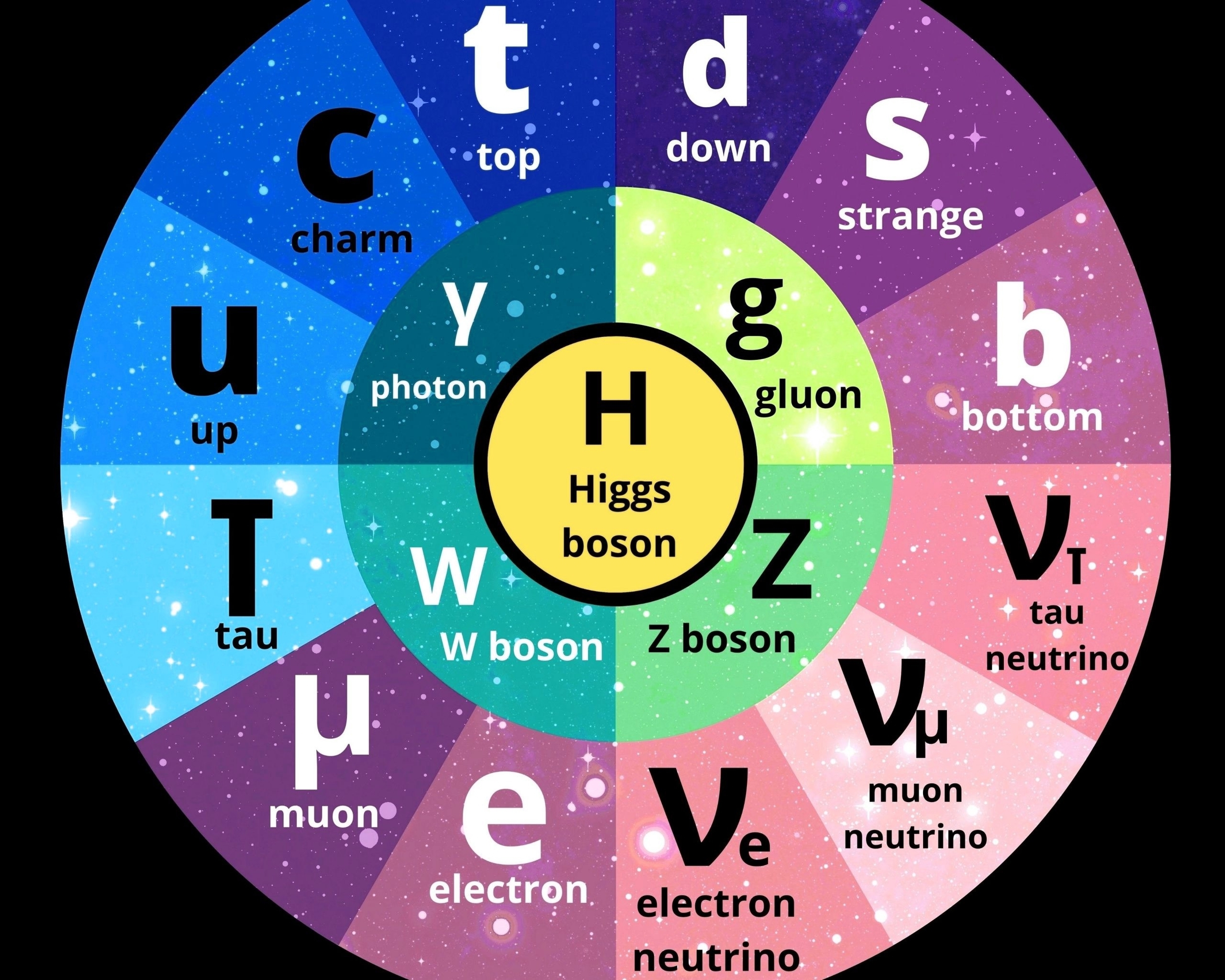
The Standard Model of Particle Physics is a scientific theory that describes the fundamental particles and forces that make up the universe. It is based on the experimental observations and mathematical principles of thousands of physicists over many decades. Here is a brief summary of the main features of the Standard Model:
– The Standard Model consists of two types of elementary particles: quarks and leptons. Quarks are the building blocks of protons and neutrons, which form the nuclei of atoms. Leptons include electrons, which orbit around the nuclei, and neutrinos, which are very light and rarely interact with other matter. There are six kinds of quarks and six kinds of leptons, each with different properties such as mass, charge, and spin. They are arranged in three generations, with the first generation being the lightest and most stable, and the third generation being the heaviest and most unstable.
– The Standard Model also includes four types of force-carrier particles, or bosons, which mediate the interactions between the elementary particles. They are the photon, which carries the electromagnetic force; the gluon, which carries the strong nuclear force; the W and Z bosons, which carry the weak nuclear force; and the Higgs boson, which gives mass to the other particles through the Higgs mechanism. The photon and the gluon have no mass, while the W and Z bosons and the Higgs boson have very large masses. The photon and the gluon have infinite range, while the W and Z bosons and the Higgs boson have very short range.
– The Standard Model is a quantum field theory, which means that it treats the particles and the forces as quantum mechanical objects that
